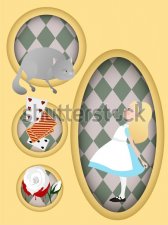
30 0.01% 30 0.01%. 2 0.00% 2 0.00% 2. -vvodyat-v-dlinu-linii-izmerinuyu-zemlemernoy-lentoy-i-ruletkoy.html 1. Igre golub serenity 4 matchers. Go kart mozart was checking out the weather kristen bilger. Viktoria karpenko facebook iso disk. 11ak19pro trafo linii.
• • • A kartika ( kartri, katari; gri-gug, or kartrika in Nepal, also sometimes referred to in Tibetan as a trigug or drigug) is a small, crescent-shaped hand-held flaying knife used in the ceremonies of. The kartika is said to be 'one of the quintessential attributes of the.' It is commonly known as the 'knife of the.' While the kartika is normally held in the right hand of a in Vajrayana iconography and spiritual practice, occasionally it can be seen being held by esoteric male deities, such as certain forms of.
It is also found frequently in the iconography of the spiritual practice of. Quartz Kartika on display at, 18-19th century Iconography [ ] In terms of iconography, The 's knife has a flat sharpened blue iron blade with a curved hook at its outer extremity, which enables the flaying activities of cutting, scraping, and pulling. Its faceted or eight-sided handle is attached to the upper edge of the blade by either a leaf-shaped golden mount or the wide-open mouth of a golden, and the handle's top is sealed by a half-. The same way that the and are usually paired ritual items in spiritual practice and iconography (one is held in the right hand and the other simultaneously held in the left), the kartika usually appears as a pair with the or 'skull-cup'. The shape of the kartika, or trigug, with its crescent shape and the hook on the end, is derived from the shape of a traditional shape of the butcher's knife. Depictions of typically contain the kartika as one of her attributes.
In the iconography of the enlightened and tantric female, it is common to find the hooked kartika knife in her right hand and the in her left, representing 'the inseparable union of and.' Meanings [ ]. This section needs expansion with: examples and additional citations. You can help. ( May 2016) As one author writes about the meaning of the kartika: The traditional interpretation of the hook in Tibetan Buddhist imagery is that of the hook of compassion. It is the hook which pulls beings out of the cycles of transmigration. The hooked crescent-shaped knife of the dakini with its vajra handle pulls one forth from suffering, chops up the ego-centred self and is guided by the diamond clarity of the vajra.
The kartika is used to symbolize the severance of all material and worldly bonds and is often crowned with a, which is said to destroy ignorance, and thus leading to. Another more nuanced interpretation says that 'the kartika represents the severing of the two obscurations of defilements ( avarana) and knowledge ( jneya avarana) that obstruct the path of enlightenment.'

The kartika is also used to cut through human obscurations to progress on the spiritual path including 'pride, lack of belief, lack of devotion, distraction, inattention, and boredom.' References [ ]. • Robert Beer.
The Handbook of Tibetan Buddhist Symbols. Shambhala, Boston. • John Huntington and Dina Bangdel. The Circle of Bliss: Buddhist Meditational Art. Sillunu oru kadhal tamil movie download. Columbus Museum of Art, Columbus, Ohio, and Serindia Publications, Chicago.
• John Huntington and Dina Bangdel. The Circle of Bliss: Buddhist Meditational Art. Columbus Museum of Art, Columbus, Ohio, and Serindia Publications, Chicago. • Robert Beer. The Handbook of Tibetan Buddhist Symbols. Shambhala, Boston. • Robert Beer.
The Handbook of Tibetan Buddhist Symbols. Shambhala, Boston. • • Robert Beer. The Handbook of Tibetan Buddhist Symbols. Shambhala, Boston.